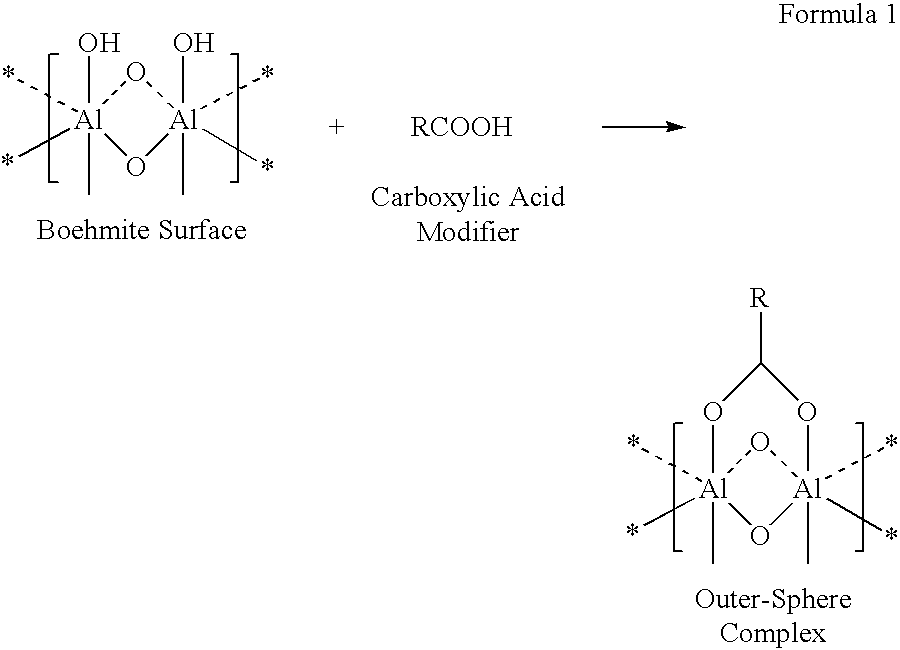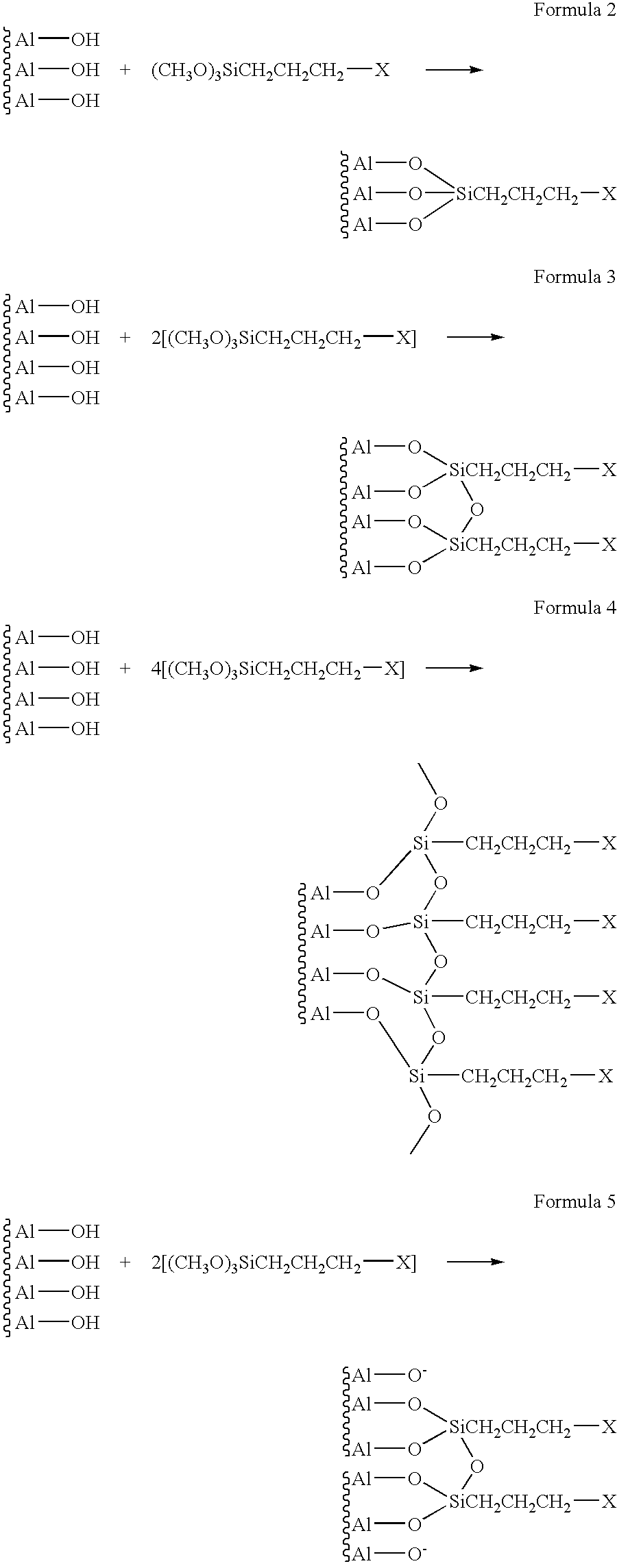Porous media coatings having surface-modified alumina particulates
a technology of surface-modified alumina and coatings, which is applied in coatings, thermal imaging, printing, etc., can solve the problems of dye-based inks that are not always water-fast, printmaking that is not always water-fast, and fades, etc., and achieves the effect of controlling dye absorption and increasing the percent yield
- Summary
- Abstract
- Description
- Claims
- Application Information
AI Technical Summary
Benefits of technology
Problems solved by technology
Method used
Image
Examples
example 1
Preparation of Glycine- and Betaine-modified Boehmite
[0046]About 50 g of boehmite (Dispal 9N6-80) was modified with 0.5 wt % quaternary glycine (proteinated to make a quaternary amine using a low pH system) and 0.5 wt % betaine at pH 3.5 to 4.0 (adjusted with dilute HNO3) in boiling water for 48 hours. The insoluble portion was centrifuged off and washed twice with deionized water. No free glycine was detected in the supernatant of the second wash with ninhydrin reagent through the modified boehmite gave ninhydrin color change, a 5% weight loss on thermogravimetric analysis (TGA), showed infrared absorption bands at 1635 and 1407 cm−1 indicating the presence of a bound carboxyl but also boehmite absorption bands at 3450 cm−1.
example 2
Preparation of Glycine Modified Boehmite
[0047]About 3.6 g of boehmite (Catapal 200) and 3.0 g of glycine was added to 40 ml of deionized water. The composition was magnetically stirred, heated to 90° C., and kept under these conditions for about 48 hours. The system showed low viscosity during the entire process. After finishing the reaction and allowing the product to cool, 20.0 g of product suspension was filtered through a 500NMWL filter membrane, and the insoluble solids above the filter paper were thoroughly washed with deionized water. The insoluble solid and soluble material in the filtrate was dried in an oven. About 1.55 g of insoluble solid and 1.37 g of soluble material were obtained.
example 3
Preparation of Betaine Modified Boehmite
[0048]About 3.6 g of boehmite (Catapal B) and 3.51 g of betaine was added into 40 ml of deionized water with mechanical stirring and reflux for 68.5 hours. The system showed high viscosity at high temperature, but low viscosity at room temperature. After finishing the reaction and cooling down, 20.0 g of product suspension was filtered through 5000 NMWL filter membrane, and the insoluble solids above the filter paper was washed thoroughly with deionized water. The insoluble solid and soluble material in the filtrate was dried in an oven. An insoluble solid (1.26 g) and 1.52 g of soluble material was obtained.
PUM
| Property | Measurement | Unit |
|---|---|---|
| pH | aaaaa | aaaaa |
| pH | aaaaa | aaaaa |
| temperature | aaaaa | aaaaa |
Abstract
Description
Claims
Application Information
 Login to View More
Login to View More - R&D
- Intellectual Property
- Life Sciences
- Materials
- Tech Scout
- Unparalleled Data Quality
- Higher Quality Content
- 60% Fewer Hallucinations
Browse by: Latest US Patents, China's latest patents, Technical Efficacy Thesaurus, Application Domain, Technology Topic, Popular Technical Reports.
© 2025 PatSnap. All rights reserved.Legal|Privacy policy|Modern Slavery Act Transparency Statement|Sitemap|About US| Contact US: help@patsnap.com


